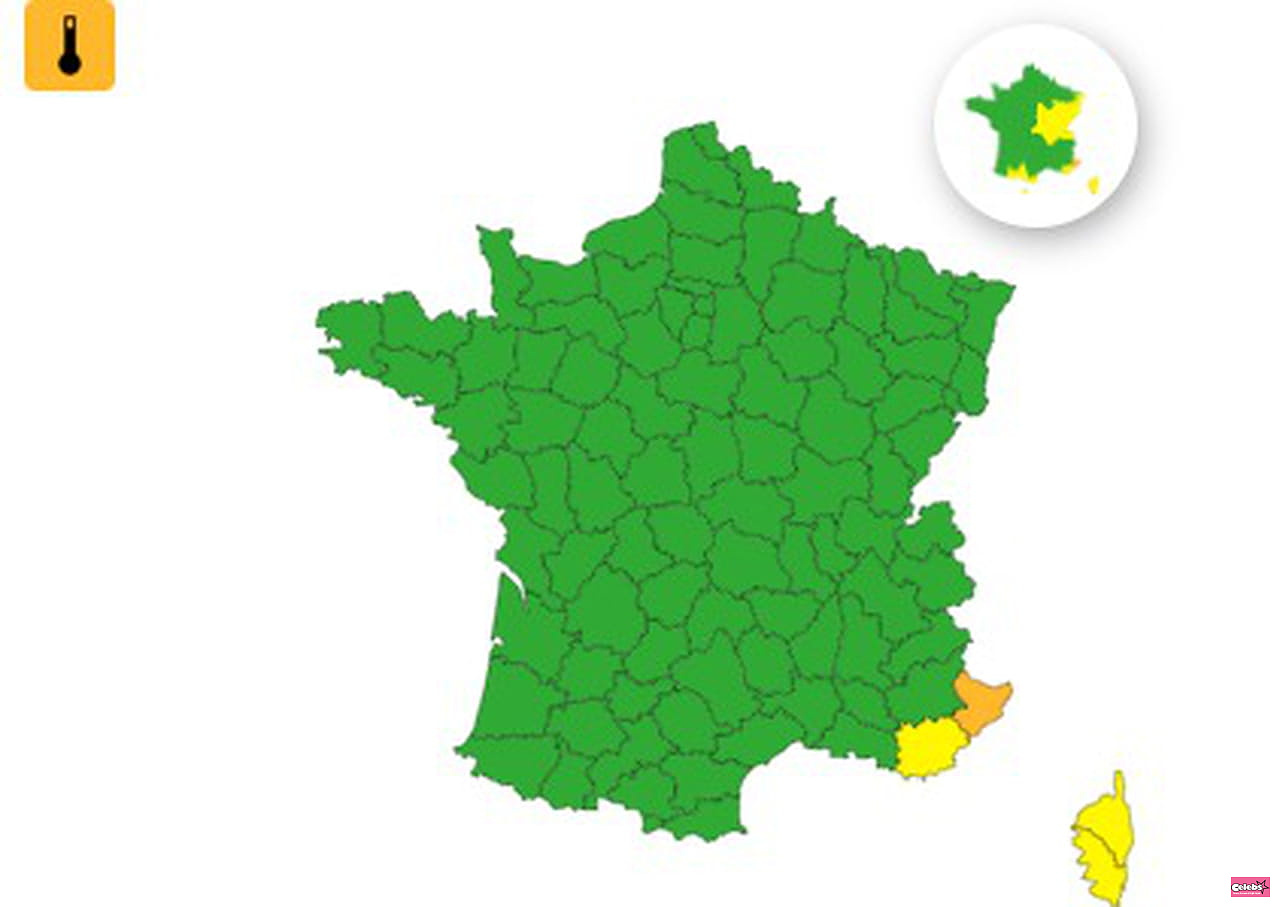HEAT WAVE VIGILANCE CARD. The weekend will be cooler in France, with the exception of the south-east; Only one department remains on heatwave orange vigilance for the day of Saturday July 22.
[Updated July 22, 2023 at 5:13 p.m.] We're going to breathe better this weekend over a large part of France. It is a little cooler in France, especially in the south of the country and Météo-France had already reviewed this Friday, July 21, 2023 its level of vigilance in many departments. Thus, only one department, the Alpes-Maritimes, remains at the orange level. The two Corsican departments and the Var are placed at the level of yellow vigilance.
It will be the same for the day of Saturday July 22 with a similar heat wave vigilance card. Meteo-France forecasts, however, report high temperatures in the south-east of the country. "This increase will be amplified on the entire coast of the Côte d'Azur, since we expect between 34 and 36°c, locally up to 37°c. In the hinterland, the maximum temperatures will remain stable compared to Friday." On the coast, we expect between 23 and 25 degrees in the morning while cooler temperatures will reach the rest of the country.
To warn of these moments of very high heat, Météo-France has set up, since the heat wave of 2003, a heat wave vigilance map. Its purpose is to prevent risks and alert authorities and populations. During hot weather, a vigilance map is updated in the morning and evening with several color levels, each corresponding to a level of danger: green, yellow, orange and red.
The heat wave alert continues in the south-east of France. Here is the latest heatwave vigilance map published by Météo France.
Every day during heat waves, Météo France updates its vigilance map at 6 a.m. and 4 p.m. There are 3 levels of heat wave alertness:
The green color on the Météo-France map means that there is no special vigilance.
After the heatwave episode of 2003, the government decided to set up a National Heatwave Plan (PNC). This heat wave plan is then activated each year from June 1 to September 15 in order to monitor seasonal weather conditions and to be able to act and warn in the event of a heat wave. This plan defines a total of 4 alert levels, with measures to be put in place for each to limit the health effects and protect the most vulnerable people such as the elderly, infants, children, infants, pregnant women, etc. The heat wave plan also makes it possible to identify vulnerable and isolated people. During a heat wave, take the right steps.
The national heat wave plan defines 4 levels:
Each level of the heat wave plan corresponds to a very specific system piloted by Public Health France, with the Ministry of Health and Prevention, in order to raise awareness and inform the French of the risks associated with each level of vigilance, of the precautions to be taken in the event of a heat wave episode, to protect the most vulnerable (infants, pregnant women, the elderly, etc.) or the people most exposed to heat due to their work, and thus avoid a health crisis. Here are the actions taken:
The Minister of Health and Prevention, François Braun, announced on July 13 that he was reactivating the toll-free number Canicule info service. You can reach 0800 06 66 66 from 9 a.m. to 7 p.m. Monday to Saturday (free call from a landline in France). An operator will inform you about the heat wave, give you advice on what to do in case of high temperatures to cool you down and lower the temperature in your accommodation.

![Loto result (FDJ): the draw for Saturday May 18, 2024 [ONLINE]](https://www.celebsnet.com/images/resize/95/334x215/haberler/thumbs/2024/05/_6abb2.png)









